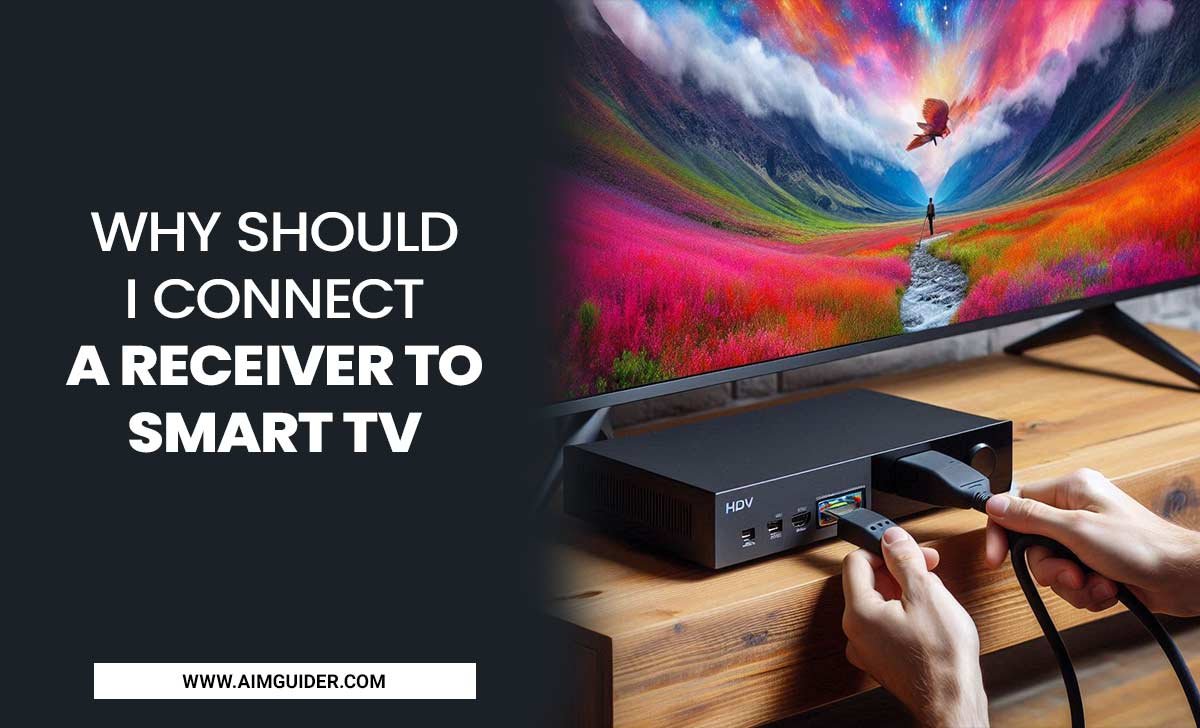From your interest in Old Style Turntable, we know you are a music lover. The best way to make an older turntable work is to attach it to the speaker. But, it is not possible to enjoy the original quality sound when the turntable is directly connected to the powered speaker.
Therefore, you may wonder if you can connect your turntable to your receiver and listen to the original sound through multiple speakers. But when you connected the receiver to the turntable, you saw that there was no Phono Input in your receiver.
So, can’t you connect your turntable to the receiver, then? You can, of course. Fortunately, there are very simple ways to accomplish this. How to connect a turntable to a receiver without a phono input? The first thing we’ll do is introduce you to turntables and receivers completely.

What Is Phono Input?

Phono Input may seem confusing to first-time Turntable users. We do not use phono input for our current music devices. Therefore, we are not always familiar with a phono input. Without using complex terms, we will try to explain what Phono input is.
The phono input connects old-fashioned devices such as turntables and the like to the receiver. A phono input circuit board includes an in-built amplifier or preamp. Up until the 1990s, the phono input was an imperative component of the receiver. But turntables are becoming less and less popular, and receivers no longer have phono inputs.
You are likely browsing this article in case your receiver is lacking a phono input. In the meantime, if you are unsure whether your receiver has a turntable or not, you can figure it out. Check the input ports on the back of your receiver for a serial called Phono. Whether you can find it or not is no problem. This tutorial will help you figure out the best hook-up turntable without any Phono Input.
What is Preamp?

If you use it as a turntable, then you have an idea of the preamp. Preamps are necessary for operating turntables. It doesn’t matter what kind of speaker you use; you need a preamp. Turntables come in two different types.
One type of turntable comes with an integrated preamp, and the other type does not. Turntables of the highest quality don’t have built-in preamplifiers.
If the turntable is of that type, it must be connected to the receiver via Phono Input. Previously, we mentioned that phono input circuit boards have in-built preamplifiers, which serve as a preamp for the turntable. You’re familiar with the basics. Here are the steps you need to take to connect your turntable to the receiver without a phono input.
How To Connect A Turntable To A Receiver Without A Phono Input?

Turntable with built-in preamp

It is very easy to hook up your vinyl to your receiver if it has a built-in preamp and your receiver does not have any phono input. Your receiver does not need any phono inputs if it has an integrated preamp. Let’s figure out how this connection works.
- To begin with, make sure that your turntable includes a built-in preamp or not. Therefore, check your turntable’s output ports. If the turntable has a Phono / Line switch, you have an inbuilt preamp. Several turntables feature USB ports. Additionally, these turntables have built-in preamplifiers.
- Turntables with built-in preamplifiers use auxiliary ports as output ports. Therefore, your turntable must have an AUX output port.
- Then it would help if you had a 3.5mm AUX to RCA Male Adapter. The cable has a headphone jack on one side. It has a two-headed ACA Male Adapter on the side.
- Attach the AUX cable to the turntable’s output port.
- Then, attach the RCA edge to the input ports of your receiver. If you wish, you can use the first and second lines. Be sure to place the red jack of the adapter on the red input and the white jack on the white input.
Turntable With Built-in Preamp

Suppose you have a turntable without an integrated phono preamplifier, and your receiver does not have a phono input. In that case, connecting the turntable to the receiver is a bit of a hassle.
As there is no amplifier in your turntable, there is also no amplifier in the receiver‘s circuit. Therefore, it is necessary to use an external preamp. To connect your turntable to your receiver, you will need a couple of items. These include –
- An external preamp. The market offers a wide variety of preamplifiers. You can buy any high-quality preamp. Depending on the quality, they cost between $50 and $500.
- RCA Male to RCA Male Adapter.
- A ground wire.
We’ve Gathered the Things We Need. Let’s Move Forward Step by Step.

- Firstly, add a preamp to the turntable. Therefore, you need an RCA to RCA Male Adapter. Attach one side of the cable to the output port of the turntable. Be sure to add red edges to the red ports and white edges to the white ports.
- Attach the other side of the RCA-to-RCA Male Adapter to the input port of the preamp.
- Take the ground wire. The turntable has a grounding socket. Add an edge to it. After that, add the other edge to the preamp.
- Now you need to plug in the receiver to the preamp. Take another RCA to RCA Male Adapter. Plugin one side of the cable to the output port of the preamp.
- Lastly, plug in the opposite terminal of the RCA-to-RCA Male to any Audio Port(RCA) on the receiver. Be sure to match colors as before.
The turntable and receiver are successfully connected.
Advantage of Connecting Without Phono Input

- Circuit board amplifiers and built-in preamps were never of acceptable quality. By using an external preamp, you can enjoy the sound of original quality.
- You can easily personalize it. There is an option to upgrade the preamplifiers as needed.
Difficulty Connecting Without Phono Input

- An external preamp is essential for this type of connection, which will require extra funds.
- Managing cables can be a challenge. You need some technical knowledge.
What Is PHONO Input In A Receiver?

A receiver with PHONO input can accept audio signals as a stereo or mono signal from an external device, such as a CD player. The receiver will then convert the audio into digital format and send it to your home theater system.
Most receivers have a PHONO input, but if yours doesn’t, you can connect it to your home theater system using an external audio cable.
Do I Need A Preamp If My Receiver Has A Phono Input?
Basically, a turntable will connect to most receivers without a phono input using optical output. Though you can purchase a separate phono preamp if your receiver does not have an optical output. After that, connect the output of your turntable to the input on your receiver. You may need to purchase a separate phono preamp due to having no optical output.
What Happens If I Connect A Turntable Without Preamp To A LINE-Level Input (AUX, LINE, CD, Etc.)

Turntables that have a built-in preamp will work fine with LINE-level inputs, but turntables that require an external preamp will not. To connect a turntable without preamp to a LINE-level input, use a specifically designed audio output cable for connecting turntables to receivers.
You can connect a turntable without preamp to LINE level inputs using the 3.5mm aux input on most receivers accordingly. Basically, some receivers have a USB port to connect a turntable without a preamp.
Also, some receivers have a built-in Bluetooth capability to connect a turntable without a preamp. Otherwise, refer to your receiver’s Owner’s Manual or online instruction guide for more information.
Recommended Products
- A stereo motherboard or audio interface that has a phono input.
- A turntable with RCA outputs (or a digital-to-analog converter).
- An amplifier with RCA inputs and output capabilities, such as the Yamaha RXA-790 AV receiver.
Recommended Affordable External Preamps
- Orange MicroMojo
- Headroom Mini-Preamp
- Pod Xtrem Preamps
- Cakewalk UA-5 Preamp/DAC
- Allo Audio Titan
- Musical Fidelity MFC-250 Preamp/DAC
- Sony PS-LX250H
- BIC America BP-1 Preamp/DAC
- Burmester PM-5200i Preamp/DAC
- Parasound Halo A2300i Preamp/DAC
- Marantz PM-6005 Preamp/DAC
Final Thoughts:
Turntables are becoming increasingly popular among music lovers. Having a turntable will make your music experience better if you’re excited about music. Feel free to attach your turntable to your main sound system if you already have one.
We welcome any feedback if you experience trouble connecting the turntable to the receiver without phono input. I hope now you know how to connect a turntable to a receiver without a phono input.
FAQs:
1.What Are The Differences Between A Stereo Receiver And An Amplifier?
Ans: A stereo receiver is a device that receives and amplifies two-channel audio signals. Besides, an amplifier is a device that increases audio signal power.
A stereo receiver will have two balanced inputs and can evenly split the audio signal between the left and proper channels as well. An amplifier will only amplify one side of the audio signal, basically the front speakers.
2.What Input Can I Use?
Ans: Your input will vary depending on your project and audience. However, some familiar input sources include surveys, focus groups, interviews, and user research.
When conducting user research, it is often beneficial to have multiple input devices to get a broad perspective on what users want and how they use them.
3.What Is A Phono Unit?
Ans: Basically, a phono unit is a device that converts the audio signal from an analog format to digital for playback on a digital player. However, you can use it with turntables or recorders to digitize older vinyl records and transfer them to a computer.
4.What Is Phono Input?
Ans: Basically, Phono input is a type of audio input that enables the connection of a turntable or cassette player to an amplifier. However, phono inputs convert audio signals by function accordingly.
5.What Is LINE-Level?
Ans: LINE-level is an audio input that can input signals from musical instruments and other equipment. It typically has a lower output level than an XLR or TRS jack, requiring less amplification when played back through speakers.
6.What Is The Difference Between A LINE-Level Input And An RIAA-Compliant Turntable?
Ans: LINE-level inputs are less expensive and often found on cheaper turntables. They don’t usually have tone controls, so you will need to use an external tone control if you want to adjust the sound quality. RIAA-compliant turntables typically have more features, such as tone controls and built-in phono preamps.
7.What Is The Difference Between A Standalone And An Integrated Receiver?
Ans: Standalone receivers are typically cheaper and smaller, while integrated receivers are more expensive but offer more features. However, integrated receivers often come with built-in speakers and a CD player or Blu-Ray player, which makes them ideal for use in a home entertainment center.
8.What If My Turntable Is Not Working Correctly?
Ans: If your turntable is not working correctly, replace the needle. At this point, you can do this by taking it to a store specializing in audio equipment or using a DIY guide.








